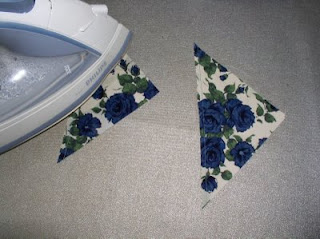
No I am not doing another bag, again, although there will be some. This one is very utilitarian, it's to keep my potatoes dry (no plastic bag), and slow the greening process, as well as make them more interesting.
I used some cheap and strong fabric, sewed along the sides a french seam (in France we call it "une couture a l'anglaise", an english seam), leaving 2" at the top. You sew once at 1/4" of the edge, turn the bag inside out and sew again at 1/4". This way the raw edges are enclosed in the seam.
Then you fold twice the
fabric at the top to create a channel used to pull the string and close the bag. Sew along the fold on both sides of the bag.
The next step is to decorate, either yourself or with the help of some children on holidays at the moment !

I had fun with my youngest daughter while waiting at the swimming pool.
I used some "Fabricfun, pastel dye sticks" that you just iron when you have finished.
The plan was to make a few of these for the potatoes, onions, etc...but I am quite busy it seems and just managed to do one. They are easy and fun to make so I will come back to this.
We did put more colour on this side after I had taken the photograph.
I hope this might give you some ideas.







 I took some photos of my sewing process to make the block. A pinwheel block is made of 4 half square triangles sewn together.
I took some photos of my sewing process to make the block. A pinwheel block is made of 4 half square triangles sewn together.

